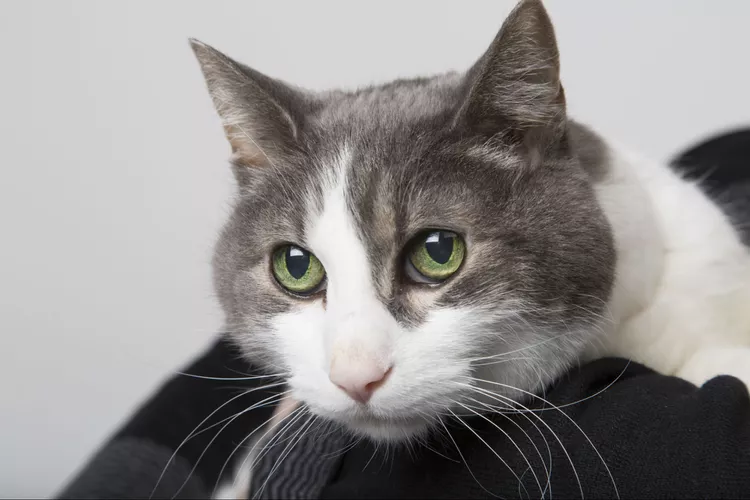
A cat urinating outside the box can be marking behavior, where a cat feels the need to mark its territory. But there are some underlying health conditions which may cause a cat to urinate outside the litter box and some environmental causes as well.
If this behavior has happened more than once or twice, you may want to bring your cat to the vet to rule out any health issues. If it is, in fact, marking behavior, there are steps you can take to curb it.
Cats use urine to mark territory that’s important to them. Cats often get along quite well until they reach social maturity between 2 to 4 years of age. House-soiling usually involves squatting and depositing urine or feces on a horizontal surface, while urine marking tends to target vertical surfaces.
However, cats can urine-mark on either horizontal or vertical surfaces. Intact male cats are the more typical culprit for urine-spraying, but neutered cats of either sex can decide to baptize the house.
Cats will snub the litter box if it’s in the wrong spot (too near food or sleeping spots); if it's not clean, or sometimes when they have to share with another cat. They may not want to “go” after another kitty or want a different box for solids and another for liquids.
Cats also have very specific preferences for the types of box filters or surfaces, and sometimes the box may be too small to accommodate a big-tailed feline.
Spreading the scent of urine around actually helps lower cats' stress levels. Cats like routine and anything that disrupts their normal day-to-day could put their tails in a twist. That could be anything from new drapes, a stray cat that patrols outside the window, or even your work schedule being unpredictable.
In the spring when stray cats go into heat, the scent and sound can prompt indoor cats to become more stressed and increase territorial marking.
In addition, stress can make any medical or behavioral problems worse. So whether your cat’s issue has to do with health issues or strictly territorial marking, a stress-reduction program should help.
If you have more than one cat, your cats may be at the age when they’ve reached social maturity and may be jostling for position within the household. The Feliway synthetic pheromone can be helpful because it signals the cat that its environment is safe. Rescue Remedy also works for a percentage of cats for reducing stress.
Pay attention to where your cat urine marks. A urine detector or black light should make urine glow, so you can clearly see any soiled areas. Clean thoroughly with an odor neutralizer product such as Anti-Icky-Poo, which eliminates the odor that draws cats back to the scene (and scent) of the crime. Ammonia and bleach also work well. The goal is to remove the odor so the cat doesn't think it's OK to "go" there again.
Next, change the association of the place by placing toys, a cat bed, or food bowls right on top of the spot. Cats won’t want to spray where they play, sleep, or eat. Spraying the Feliway on the inappropriate spot also can deter a repeat.
With multiple cats, you may need to coddle twice as much (or more). Offer at least one litter box per cat, and space these in different parts of the house. Make sure they are extra big because some cats just like the added space to maneuver.
Similarly, provide scratching objects and resting places for each cat in a variety of places throughout the home. Extra vertical space can allow cats to climb and get away from each other, while each “owns” its own resting spot. Single-cat shelves (only space for one cat) can keep cats from having to share.
A number of health issues can prompt urinating outside the box, so a trip to the vet is in order if you can't stop the spray.
Kidney disease and diabetes can increase the volume of urine so the cat can't reach the box in time.
Feline lower urinary tract disease (FLUTD) can be caused by bladder stones, crystals, bacterial infection, or cancer that creates bladder inflammation (cystitis). Cystitis hurts and makes cats feel like they need to “go” more often. Sometimes they’ll associate the litter box with discomfort and look for other places to urinate.
On top of that, 60 percent of these cases are idiopathic—no known cause—making the medical condition hard to treat. Idiopathic cystitis signs tend to go away on their own within about five to seven days but can recur especially during stressful situations.
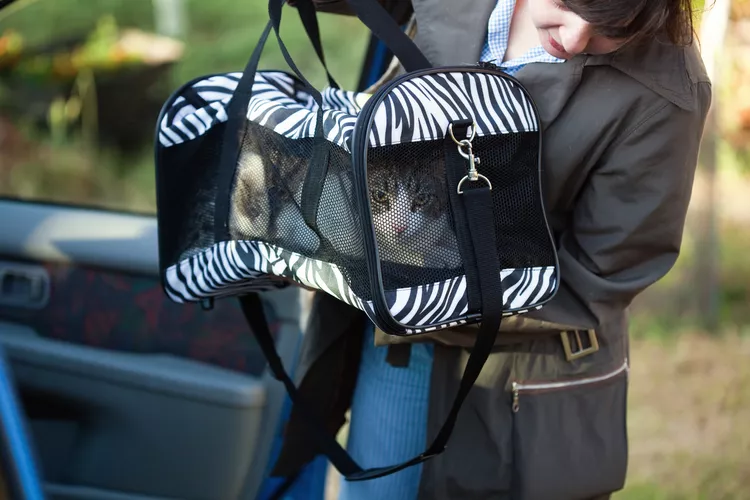
How to Take a Car Trip With Your Cat
Think you can't travel with your cat? Think again! Traveling with your cat just takes a little preparation and planning. Here's how.
How to Determine Your Cat's Age
Determining the age of an adopted cat is just guesswork, but a vet can look at teeth, sexual maturity, fur coat, and eyes to estimate.
Cat Food Ingredients to Avoid
When checking the nutrition content of cat food, look for ingredients that are not healthy or show it is of poor quality. Avoid these 3 ingredients.
What You Need to Know About Homemade Cat Food
If you want to cook for your cat, make sure to read about the risks associated with homemade diets for cats
Can Dogs Eat Raw Chicken Feet?
What are the potential health benefits of chicken feet for dogs? What are the risks?
Macadamia Nuts and other Nuts That Are Toxic to Dogs
Find out why macadamia and other nuts are poisonous to dogs, what signs to look for, and what is needed to treat the toxicity.
10 Tips for Taking Care of a Senior Dog
Is your dog a senior? Changes to their diet, exercise, and care are required. Here's how to make sure they're living their best and healthiest life.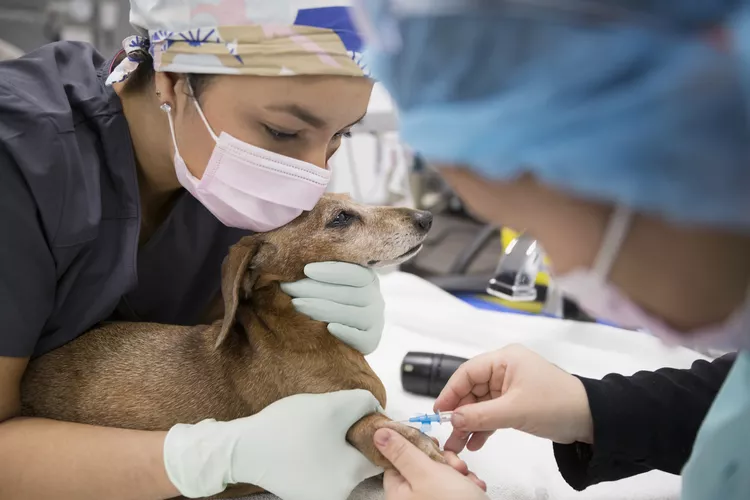
Hookworms in Dogs
Hookworms can make a dog uncomfortable but may also lead to serious blood loss and anemia. Learn the causes, treatment, and prevention.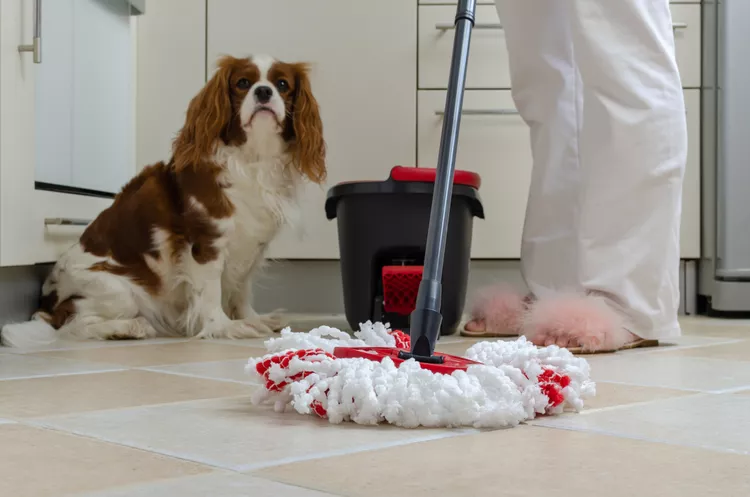
Is Swiffer WetJet Safe to Use Around My Pet?
ASPCA toxicologists deemed Swiffer WetJet to be safe for use around pets, but there are other all-natural floor cleaning options available.
Can Dogs Eat Bread?
Is bread a safe snack for you dog? Are there kinds of bread you should avoid? Learn more about whether it's okay to feed your dog bread.
14 Hypoallergenic Cat Breeds for People With Allergies
There are no true hypoallergenic cat breeds. But some, such as the Siamese and Siberian, might be less likely to cause allergies than others.
Burmilla: Cat Breed Profile, Characteristics & Care
The playful and social burmilla is one of the newest cat breeds to be officially recognized by the CFA. Learn about burmilla breed.
Nebelung: Cat Breed Profile, Characteristics & Care
The Nebelung is a rare breed of domestic cat that’s known for their long gray-blue fur and gorgeous green eyes. Learn about the Nebelung cat breed.
Cymric: Cat Breed Profile, Characteristics & Care
The Cymric, a long-haired Manx, is one of the world's oldest cat breeds. This tailless cat is friendly and playful. Learn about the Cymric breed.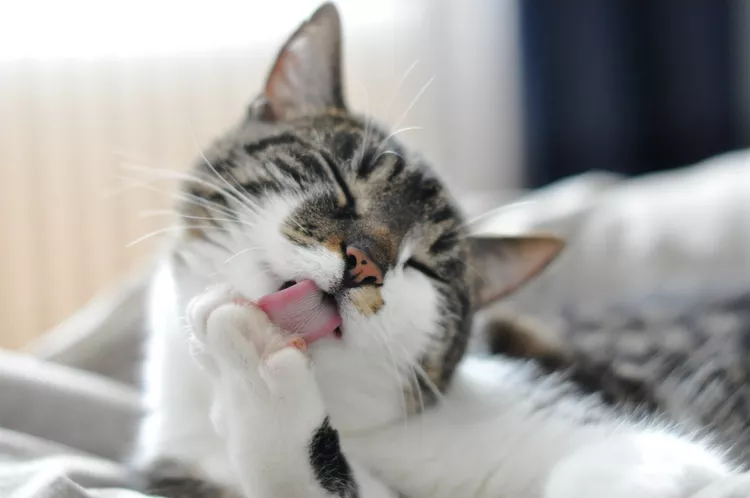
Here's Why Cats Groom Themselves
Learn all about cats' grooming habits: how and why cats groom, including mutual grooming, over-grooming, and displacement grooming!
Pharaoh Hound: Dog Breed Characteristics & Care
Learn all about the Pharaoh hound, a sight hound dog breed known for their slim appearance and the ability to blush when excited.
How to Walk Your Dog
Dog walks should be fun for your dog while respecting your community. Learn why walking your dog is important and get essential safety and training tips.
How to Stop Your Dog From Whining
Whining is a natural way for your dog to communicate with you. Explore the reasons dogs whine and how to discourage your dog from whining too much.
How to Stop Your Dog From Barking Excessively
All dogs bark, but excessive barking is a behavior problem. Learn how to help stop excessive barking and prevent it from happening all the time.
How to Train Your Dog to Live With Another Dog
When you add a second dog to your household, it's natural that there will be an adjustment period. Learn how to get two dogs to become acquainted.